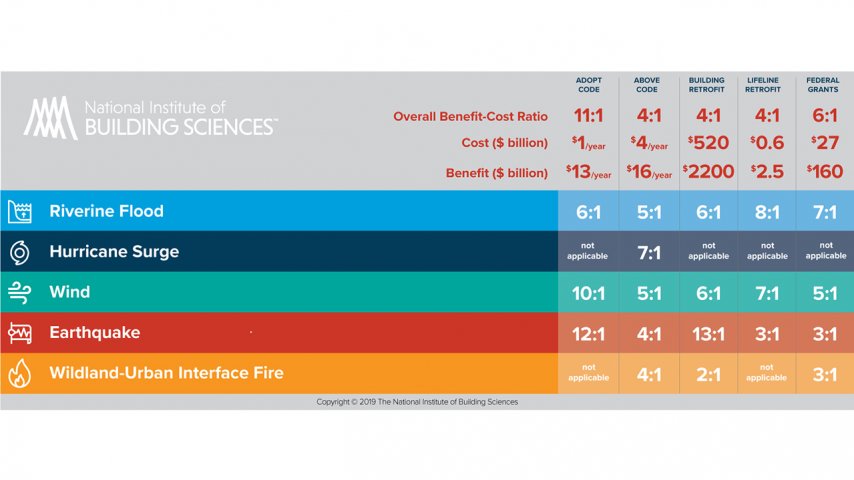
U.S. disaster losses from floods, wind, earthquakes, and fires average $100 billion per year.
In 2017, losses exceeded $300 billion—25% of the $1.3 trillion building value put in place that year.
Fortunately, there are affordable and highly cost-effective strategies that policymakers, building owners, risk managers, and others can deploy to reduce these impacts. Strategies include adopting and strengthening building codes, upgrading existing buildings, and improving utilities and transportation systems.
The benefits and costs associated with these mitigation measures have been identified through the most exhaustive benefit-cost analysis of natural hazard mitigation to date and documented in Natural Hazard Mitigation Saves. The table summarizes how mitigation can save up to $13 of avoided future losses per $1 invested.
I recently presented a webinar about Mitigation Saves study for the Rocky Mountain Chapter of the Association of Continuity Professionals.
The study was limited to physical modifications. Planners can learn about these limitations to be more aware of how business continuity planning and disaster recovery can complement engineering mitigation. View the video recording of the webinar at www.sparisk.com/pubs/Porter-2020-RMACP-MSv2.mp4.
Hurricane and wildfire seasons are right around the corner. Learn more about how you can protect your property and loved ones by visiting nibs.org. Let’s be social! We’re @bldgsciences on Twitter, or you can find us on Facebook.




